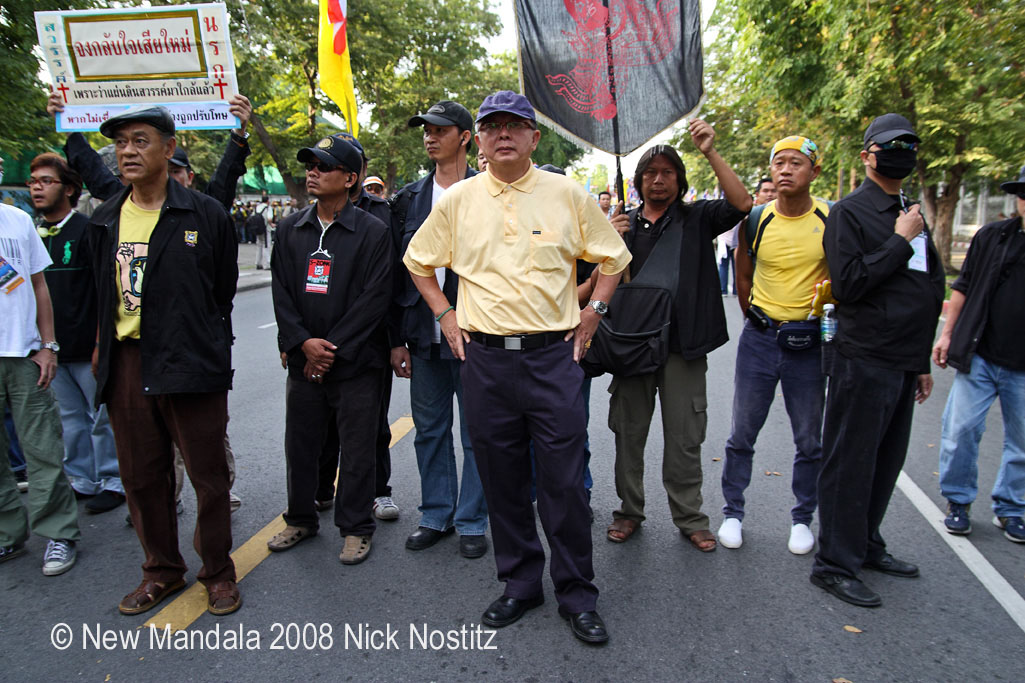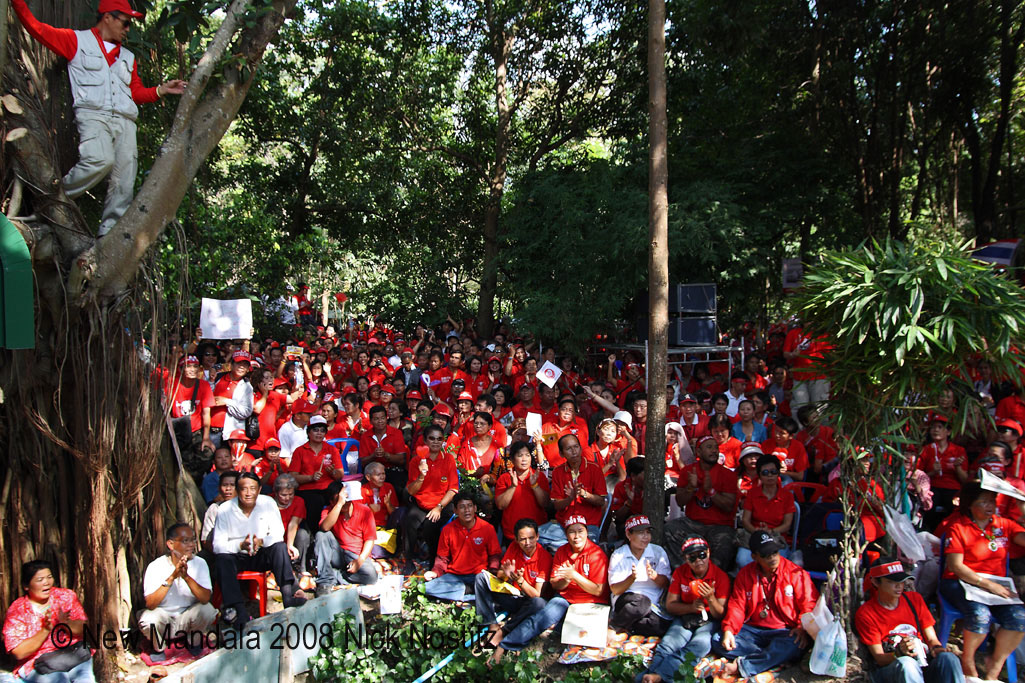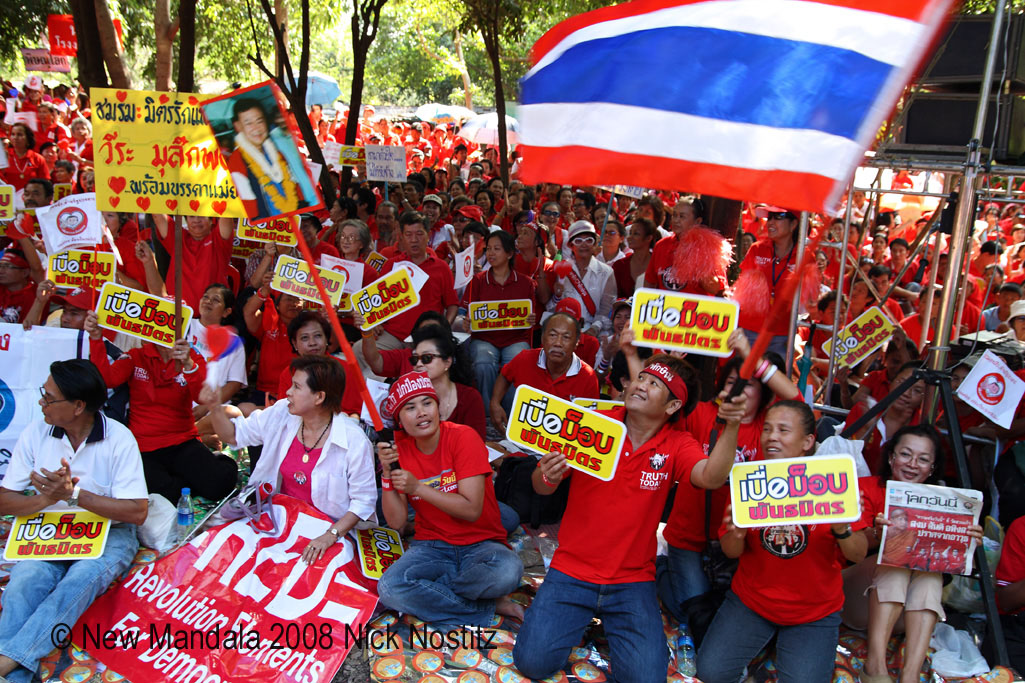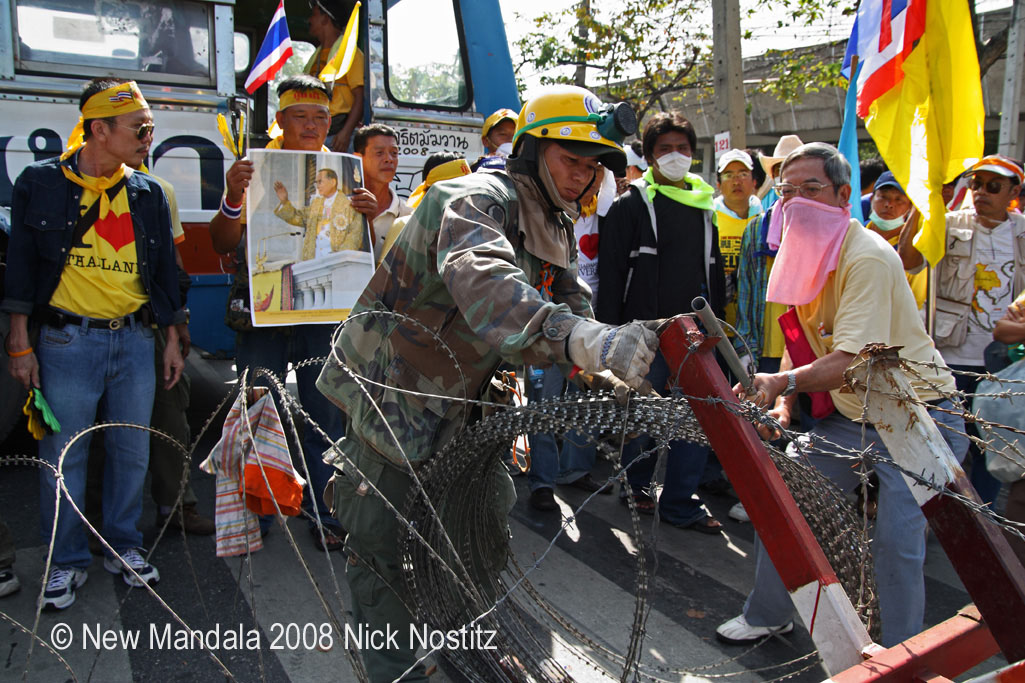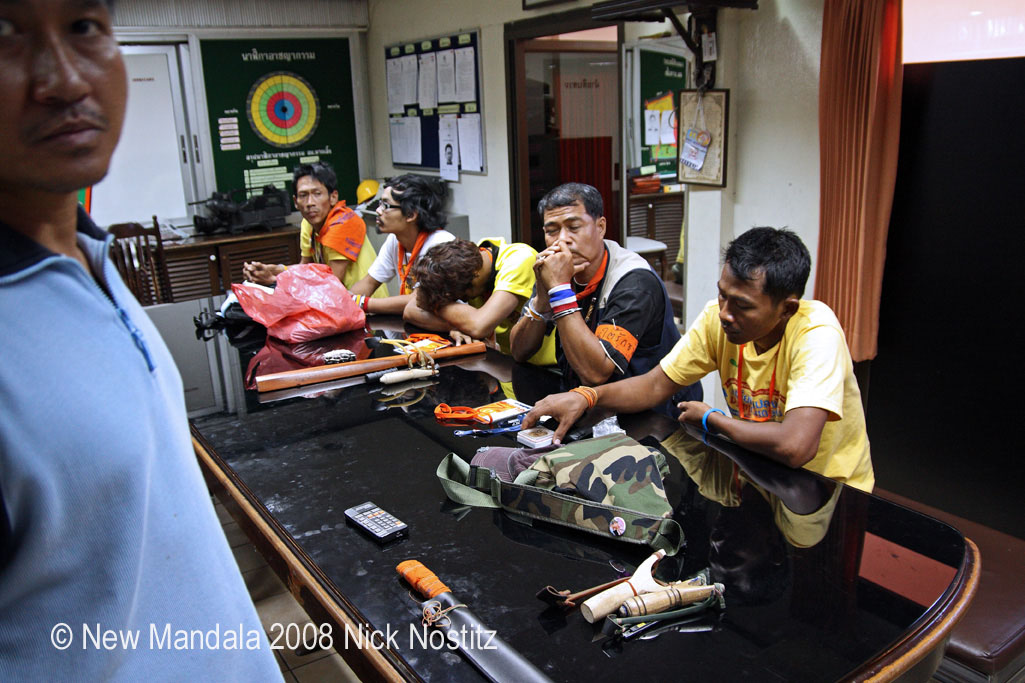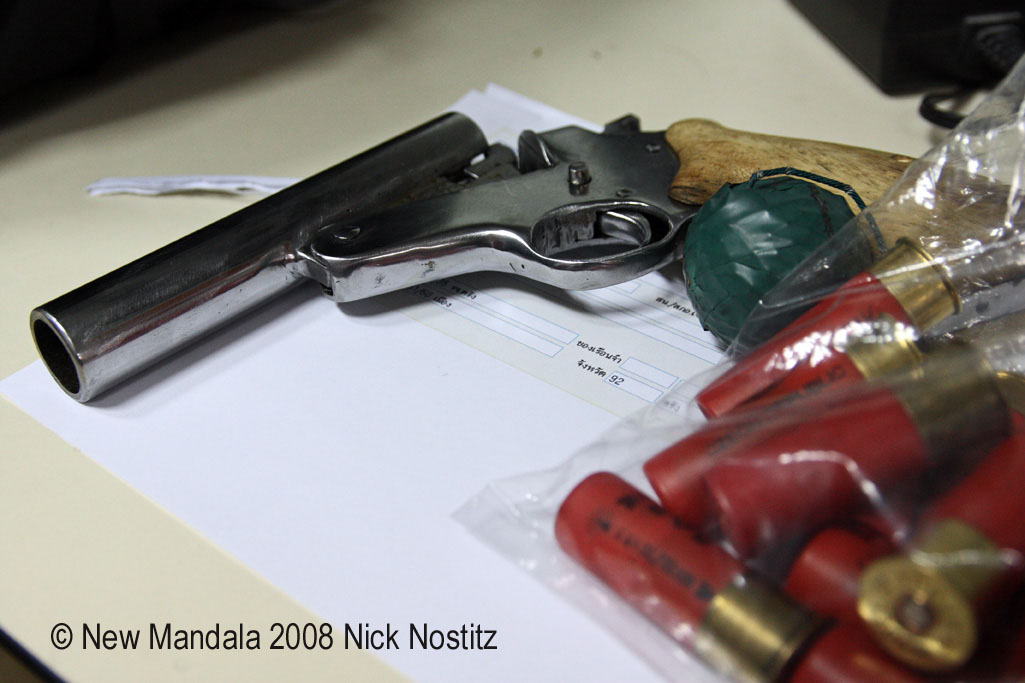The day of the last battle went without any casualties, thanks to the enormous restraint by all parties – the police, the pro-government United Front for Democracy Against Dictatorship (UDD) and the anti-government People’s Alliance for Democracy (PAD). Several explosions were heard in the morning hours of 24 November, raising fears of another day of escalating violence. But in the end casualties were avoided and there was only slight damage.
Several things though are rather clear by now. The UDD seems to have managed to begin transforming their previous image of upcountry thugs into a peaceful pro-government movement that holds large monthly meetings. The gathering at Wat Suan Gaeow was attended by about 23,000 people, many families, mostly from Bangkok and surrounding provinces. I do hope that they keep on with this strategy that was begun at the Muang Thong Thani meeting, and followed with the Rajamangala event.
The PAD clearly fell short of their aim of gathering more than 100,000 supporters, and also there was not the announced masses joining the “final battle”. PAD managed to gather about the same number of supporters as the UDD, many driven in from distant provinces.
24 November 2008, however, had a few small incidents that should be looked at seriously by the PAD. One ugly incident was reported at Don Muang, where a police colonel was attacked, beaten and pushed over by several women. Another very serious incident was the arrest of 5 PAD guards that had hijacked a public bus, and were armed with one illegal shotgun, a ping-pong bomb, several machetes, bullet proof vests, and other assorted weaponry. These guards were clearly still active guards – they had guard IDs, and several mid-ranking PAD leaders, not very happy about the incident, appeared at Nang Loeng police station where the guards were detained.
So far the PAD as a group has failed to distance itself clearly from their more violent elements. Many ordinary PAD supporters are not aware of the arming of some of the guards, and follow the claims of their leadership that any shooting incident that happens is to be blamed on the “third hand”. Others are appalled by the martial behavior of some of these guards. Most, I am sure, are not aware of how many arms there actually are around.
A movement that defines itself as “non-violent” cannot afford to have violent incidents. Two shootings in recent weeks can be attributed to PAD guards – one person was killed about one hour after a grenade was launched at PAD guards on 30 October. The second victim, injured in the shoulder on 2 November, was the driver of a car with 5 young people who had a night out in Banglampoo and took a wrong turn on their way home. They ended up at PAD barricades and were shot at by a PAD guard. Several bullets were fired at their car. Police were not allowed to investigate the crime scene during the night of the incident, but I have interviewed the victims, and there was more than sufficient evidence to support their story.
Several bombs were launched against PAD, costing the lives of two people. But in at least two of the recent explosions at Government House there is clear evidence that they were caused by conflicts between the guards.
While the UDD has begun to clearly distance itself from the violent government supporters, that trend is still somewhat missing in the public statements by the PAD. Rejection of the accusations made against them and blaming the “third hand” or infiltrators does not stand up to clear proof and overwhelming evidence.
Both groups have to understand that nobody can win this conflict by violence. It will in the end only alienate the average citizen, and the country will descend into a circle of violence that might bring it to the brink of civil war. Especially in a country like Thailand, where violence in political and social conflict has a long tradition, leaders of such protests groups have to make sure that they find ways to discourage these elements within their own ranks.
If PAD guards cannot be disarmed completely, and that means also that demonstrations are not anymore led by hooded men holding sticks and iron bars, then these people have to be expelled from the PAD. The PAD has to clearly distance itself from these groups. And, ideally, PAD should redefine itself, leave Government House, and return to a constitutional form of protest.
It would also be prudent that the so called independent organizations that have expressed support for PAD by calling them a non-violent protest might hold back with their support when faced with clear evidence of the opposite, until the PAD has indeed returned to the path of non-violence.
Nobody can deny the PAD the right to protest against the Government within the means of civil disobedience. What we have to now is a very unhealthy mixture of ordinary protesters mixed up in something that is closer to criminal disobedience.
 Facebook
Facebook  Twitter
Twitter  Soundcloud
Soundcloud  Youtube
Youtube  Rss
Rss 